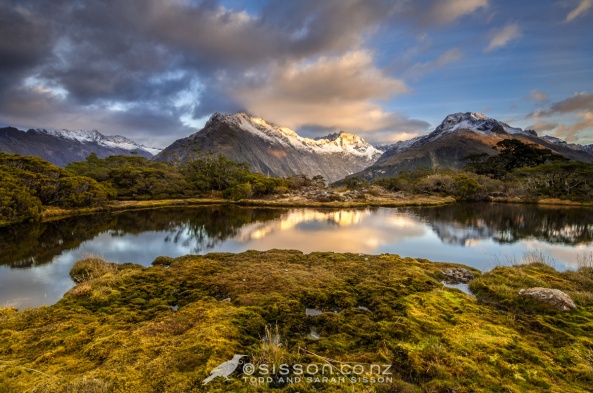You can read my full Nikon 85mm f/1.4G landscape lens review on sisson – New Zealand photography
Background
I don’t recall having been on a drunken bender last April, but it may explain why I have little recollection as to how I ended up owning a Nikon AF-S 85mm f1.4G. This lens is really not a traditional fit for a landscape photographer, in-fact the B&H description for the lens has “Traditional Portraiture Lens” splashed all over it. Anyhow, I did order it, so it was time to see how I could incorporate the lens into my landscape photography repertoire. I am pleased to report that the 85mm f1.4 is now one of my favourite landscape lenses. Thank God – it wasn’t cheap…..
In all seriousness, I purchased the 85mm f1.4 in preparation for the delivery of my new Nikon D800e. Prior to the D800e I had been shooting Nikon DX and Canon Full Frame (5dmkii), I had wanted to return full time to Nikon for several years, but the right DSLR body for my needs had not been in the Nikon line-up. When the D800 was announced it was obvious that it’s 36MP sensor would settle for nothing short of premium optics and I had nothing in my bag that would stand the D800’s onslaught of pixels.
The 85mm is an ‘overlap lens’ in my bag as I also own the superb Nikon 70-200mm f/2.8 VRii (review) however, I purchased the prime mainly because I love defocus in my portrait photography (mainly my kids these days) – the 85mm f1.4 is renowned for it’s silky bokeh and after 12 years of professional photography, I figured it was time to treat myself to something a little exotic.
Unfortunately, that is not sound business practice for me – I make my money from landscapes, so I had to figure out a way to make the 85mm f/1.4G earn it’s keep – here’s how I use it for landscape photography…..
What’s It For?
I consider the Nikon 85mm f1.4G to be one of the most ‘creative’ lenses in my camera bag. By that, I mean that I rarely shoot ‘standard’ landscape images on the 85mm f/1.4 – I find that have to consciously seek uses for the 85mm. Now, that may seem like putting the tractor before the haybale but for me that is a good thing – I need to stretch my photographic boundaries – I think that the 85mm makes me a little bit more complete as a photographer. So far, I use this lens for four primary uses:
1. Subject Isolation Via Defocus
 |
| Frosty Tree: D800e, Nikon 85mm f/1.4G – @ f/1.4. Shooting at f/1.8 delivered the razor thin DOF required to successfully isolate this frosty little tree. I enoy the creative overlap of applying portrait techniques to nature photography. |
(Download full resolution D800e & Nikon 85mm f/1.4g sample jpeg – password = freeD800pics
2. Panoramic stitching
I like to shoot panoramic stitches that compress distance, primarily to give greater visual presence to distant mountains – I find 50mm and 85mm to be my most commonly used focal lengths for this purpose. The 85mm f/1.4 provides unparalleled sharpness and detail when paired with the Nikon D800e.
I always shoot in vertical orientation in order to gain the maximum resolution from my stitched files – 85mm provides an excellent field of view when used in this way.
The following stitched panorama is 21,000 x 6,600 pixels wide and prints at 2.1 metres @300 DPI without any enlargement.
Panoramic Stitch from Nikon D800e and Nikkor 85mm f/1.4G Lens. It’s a little hard to get impressed this wide – how about a 100% crop….
100% crops from the above panoramic Stitch from Nikon D800e and Nikkor 85mm f/1.4G Lens. The level of detail is simply stunning (a little sharpening has been applied) – this would happily enlarge to a 4m+ wide print. Please note that these look slightly better in the original file – pre-JPEG compression.








